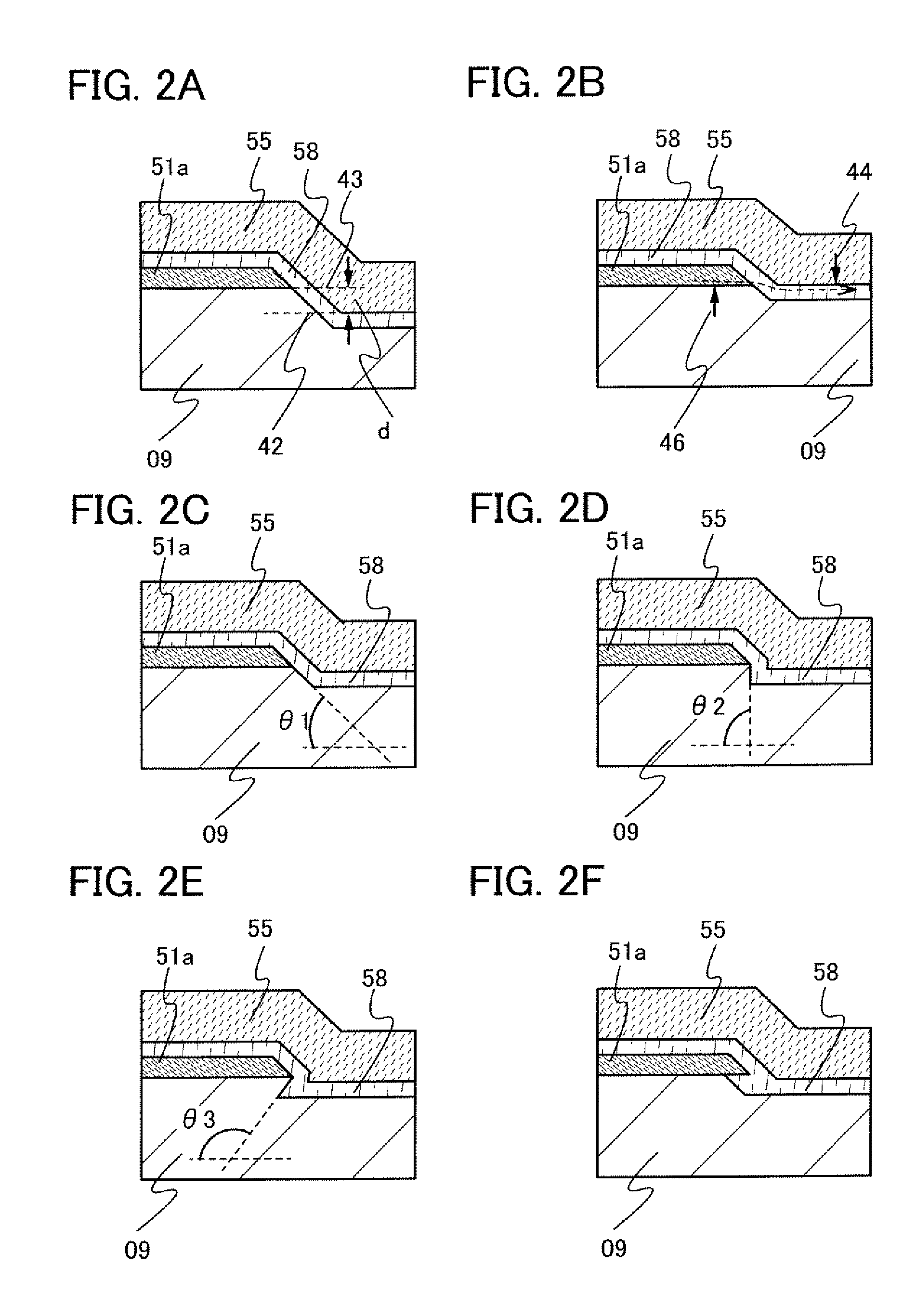Thin film transistor and display device
a thin film transistor and display device technology, applied in the direction of semiconductor devices, basic electric elements, electrical appliances, etc., can solve the problems of high manufacturing cost, insufficient switching characteristics, low field-effect mobility and small on-state current, etc., to achieve large on-state current, increase field-effect mobility, and reduce off-state current
- Summary
- Abstract
- Description
- Claims
- Application Information
AI Technical Summary
Benefits of technology
Problems solved by technology
Method used
Image
Examples
embodiment mode 1
[0053]Here, a structure of a thin film transistor is described with reference to FIG. 1, which has smaller off-state current than a thin film transistor having a microcrystalline semiconductor layer in a channel formation region and which is capable of operating at higher speed and has larger on-state current than a thin film transistor having an amorphous semiconductor layer in a channel formation region.
[0054]In a thin film transistor illustrated in FIG. 1, a gate electrode 05 is formed over a substrate 01; a gate insulating layer 09 is formed over the gate electrode 05; first microcrystalline semiconductor layers 51a and 51b which are separated from each other are formed over the gate insulating layer 09; and a second microcrystalline semiconductor layer 58 is formed over the first microcrystalline semiconductor layers 51a and 51b and the gate insulating layer 09 In addition, an amorphous semiconductor layer 55 is formed to cover the second microcrystalline semiconductor layer 58...
embodiment mode 2
[0100]In this embodiment mode, a structure of a thin film transistor with still larger on-state current and higher field-effect mobility than those in Embodiment Mode 1 is described with reference to FIG. 4. In addition, a structure of a TFT with which off-state current can be reduced is described.
[0101]A thin film transistor described in this embodiment mode differs from the thin film transistor described in Embodiment Mode 1, in that buffer layers 53a and 53b are provided between the first microcrystalline semiconductor layers 51a and 51c and the second microcrystalline semiconductor layer 58. The buffer layers 53a and 53b are provided so as to roughly overlap the first microcrystalline semiconductor layers 51a and 51b.
[0102]The buffer layers 53a and 53b are formed using an amorphous semiconductor layer. The buffer layers 53a and 53b are preferably formed using an i-type or a substantially i-type amorphous semiconductor layer. Alternatively, an amorphous semiconductor layer to wh...
embodiment mode 3
[0107]In this embodiment mode, another embodiment of the second microcrystalline semiconductor layer is described with reference to FIG. 5. A feature of this embodiment mode is that two second microcrystalline semiconductor layers are provided, one of which, on the side in contact with the gate insulating layer 09 and the first microcrystalline semiconductor layers 51a and 51b, is an i-type microcrystalline semiconductor layer or amorphous semiconductor layer and the other, on the side in contact with the amorphous semiconductor layer 55, is an n-type microcrystalline semiconductor layer or amorphous semiconductor layer.
[0108]In a thin film transistor illustrated in FIG. 5, a gate electrode 05 is formed over a substrate 01, a gate insulating layer 09 is formed over the gate electrode 05, and first microcrystalline semiconductor layers 51a and 51b which are separated from each other are formed over the gate insulating layer 09. An i-type semiconductor layer 58a is formed over the fir...
PUM
 Login to View More
Login to View More Abstract
Description
Claims
Application Information
 Login to View More
Login to View More - R&D
- Intellectual Property
- Life Sciences
- Materials
- Tech Scout
- Unparalleled Data Quality
- Higher Quality Content
- 60% Fewer Hallucinations
Browse by: Latest US Patents, China's latest patents, Technical Efficacy Thesaurus, Application Domain, Technology Topic, Popular Technical Reports.
© 2025 PatSnap. All rights reserved.Legal|Privacy policy|Modern Slavery Act Transparency Statement|Sitemap|About US| Contact US: help@patsnap.com



